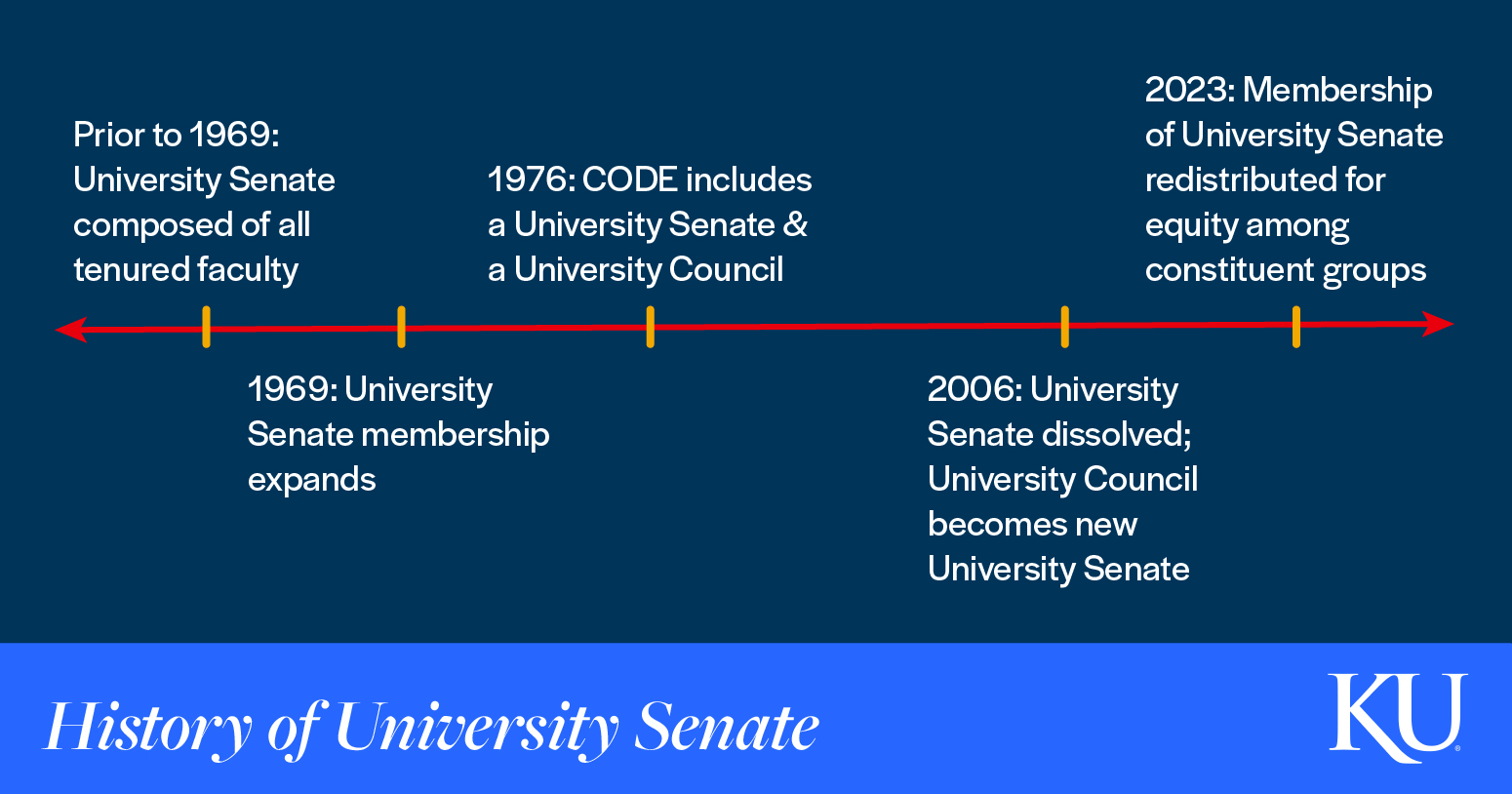History of University Senate at KU
Beginnings
In March of 1969, the Kansas Board of Regents approved a new system for University Senate at KU. Prior to the new faculty-student government, there was a University Senate composed mostly of tenured faculty and an All-Student Council composed of representatives elected from schools and housing districts. The new faculty membership of University Senate expanded to include non-tenured faculty, members of the library staff of equivalent rank, and unclassified academic staff. The student membership of University Senate included student representation from Student Senate.
An Expanding Membership
In 1976, the University Senate Code (CODE) detailed the membership of the University Senate, University Council, Faculty Senate, Faculty Council, and the Executive Committees. In the 1990s, the senate memberships evolved to include representatives from various offices on campus and, beginning in 1998, to include a growing number of staff representatives from the Classified Senate and the Unclassified Professional Staff Association (UPSA).
Restructuring
From 2004 to 2006, a committee of the University Senate worked to recommend a restructuring of KU’s Governance system. The committee, which had representation of faculty, staff, and students, sought comments from constituents prior to presenting their recommendation. The updated CODE detailed the membership of the constituent senates (Faculty, Student, Unclassified Staff, and University Support Staff), as well as the executive committees and standing committees of each.
The former University and Faculty Councils became the University and Faculty Senate, respectively, while the bodies formerly called University Senate (included all faculty, 75 students, and the executive boards of the staff senates) and Faculty Senate (included all faculty), were dissolved. Formerly, one faculty member served as president of both the University Senate and the Faculty Senate, and a second faculty member served as chair of both the University Senate Executive Committee (SenEx) and the Faculty Senate Executive Committee (FacEx). These positions were separated, with one faculty member presiding over University Senate and SenEx and a different faculty member presiding over Faculty Senate and FacEx.
In the fall of 2014, a task force comprised of Unclassified Professional Staff, University Support Staff, and University Governance representation explored, and ultimately recommended, the creation of one senate to represent all KU staff. The two separate senates merged into one Staff Senate and the accompanying memberships on University Senate and SenEx likewise combined.
Equitable Representation
In 2023, SenEx began formally exploring the option of revising the membership of University Senate and SenEx to reflect equitable representation of the three constituent senates. An ad hoc committee of faculty, staff, and student senators developed recommendations to change the number of senators in the University Senate for each constituent group. This adjustment expanded access for staff and student senators while also reducing the double labor that faculty previously did in both Faculty and University Senate. The membership of SenEx was adjusted accordingly.
The CODE was changed to specify that all future changes to the University Senate membership would require a 2/3 majority of each constituent group in order to maintain stability of the body. The CODE was also changed to include an additional step in the amendment process so that faculty maintain roles as decision makers around academic policy.
